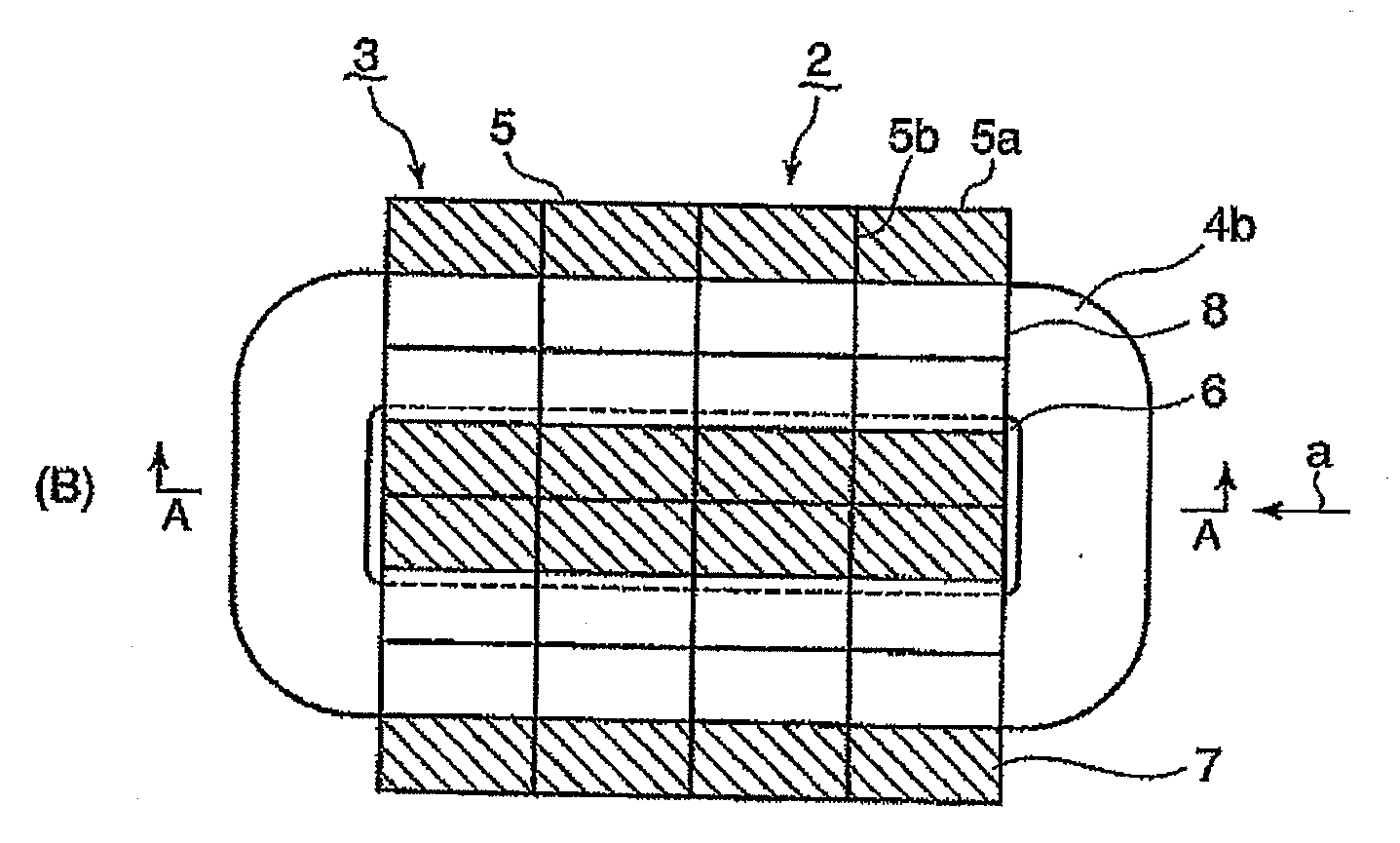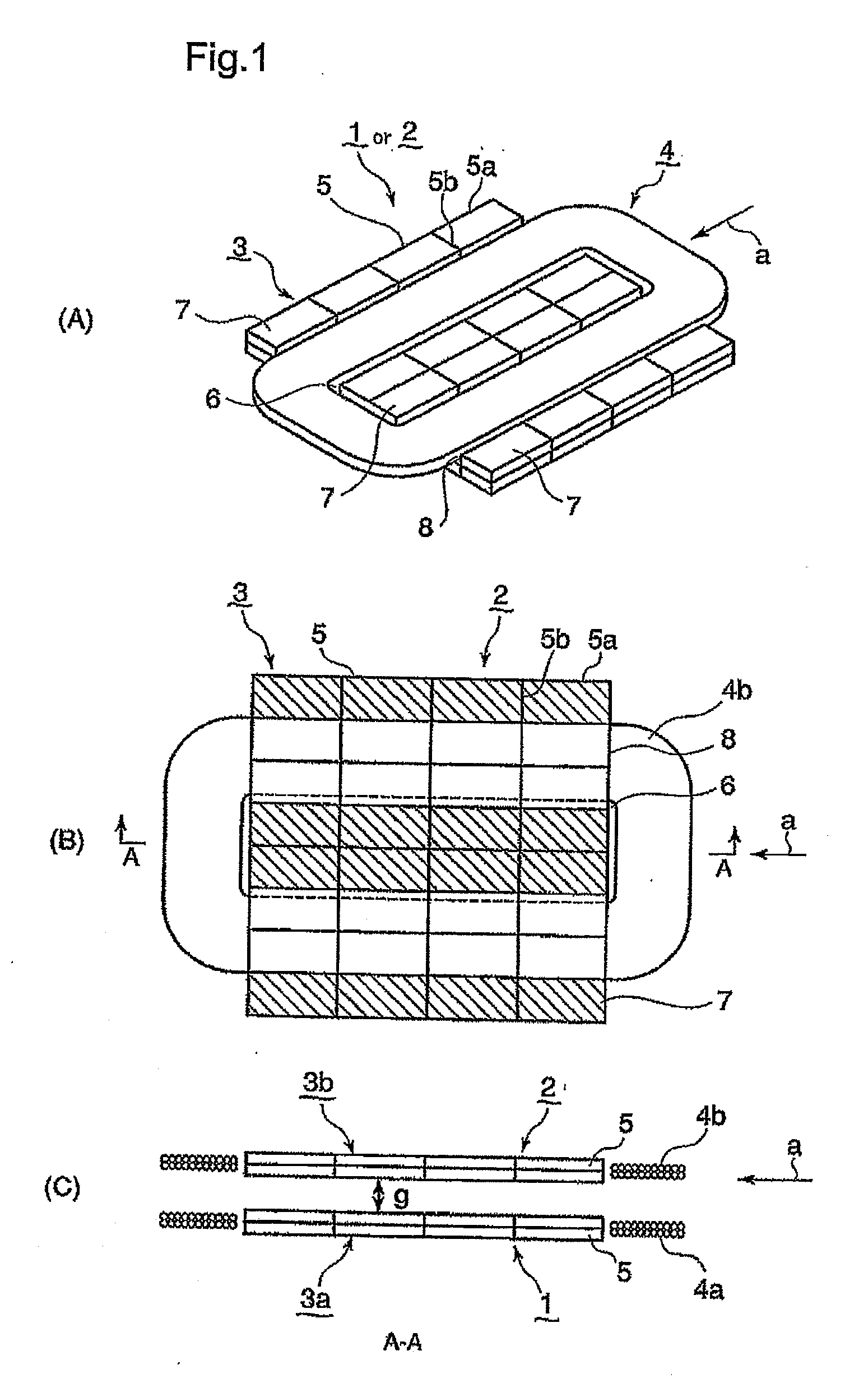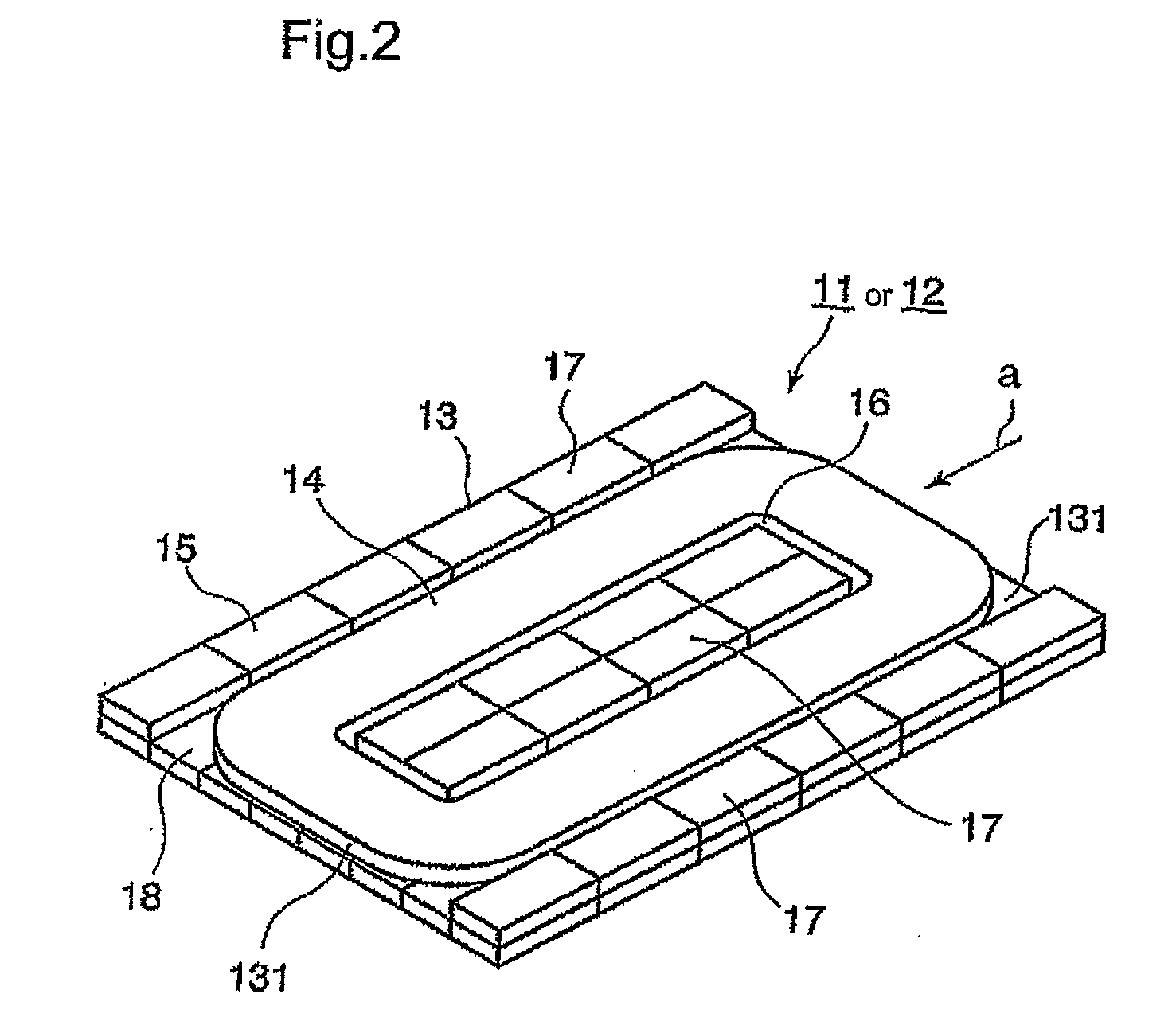Non-contact type power feeder system for mobile object and protecting apparatus thereof
- Summary
- Abstract
- Description
- Claims
- Application Information
AI Technical Summary
Benefits of technology
Problems solved by technology
Method used
Image
Examples
embodiment 1
[0060]A first embodiment of the present invention will be explained with reference to FIGS. 1A to 1C in which FIG. 1A is a perspective view illustrating a power feeding portion or a power receiving portion of a noncontact type power feeder system to which the present invention is applied, FIG. 1B is a plan view illustrating the noncontact type power feeder system in which the power receiving portion and the power feeding portion are opposed face-to-face to each other, and FIG. 1C is a sectional view along line A-A in FIG. 1B. Reference to FIGS. 1A to 1C, the power feeding portion 1 or the power receiving portion 2 is composed of an E-type core 3 and the windings 4. The E-type core 3 is composed of several planar blocks 5 made of ferromagnetic ferrite, which are appropriately laid in a travel direction (a) of a mobile object and a direction orthogonal to the travel direction (a), and which are stacked one upon another while the adjacent planar blocks 5 are joined to one another by me...
embodiment 2
[0067]Next, explanation will be hereinbelow made of a second embodiment of the present invention with reference to FIGS. 2 to 6 in which FIG. 2 is a perspective view illustrating a power feeding portion or a power receiving portion, FIG. 3A is a plan view illustrating a noncontact type power feeder system in the second embodiment, the power feeding portion being opposed face-to-face to the power receiving portion, FIG. 3B is a sectional view along line B-B in FIG. 3A, FIG. 3C is a sectional view along line C-C in FIG. 3A, FIG. 4 is a chart showing magnetic flux lines applied to the noncontact type power feeder system, FIG. 5 is a chart showing distributions of magnetic flux density of this embodiment and the prior art system in the core widthwise direction, and FIG. 6 is a view for explaining a horizontally positional deviation of a mobile object.
[0068]Referring to FIG. 2, a power feeding portion 11 and a power receiving portion 12 in this embodiment have one and the same configurat...
embodiment 3
[0078]Explanation will be hereinbelow made of a third embodiment of the present invention with reference to FIGS. 7A to 9C. FIGS. 7A to 7C show a non contact type power feeder system in the third embodiment of the present invention, in which FIG. 7A is a plan view, FIG. 7B is a sectional view along line D-D in FIG. 7A, and FIG. 7C is a sectional view along line E-E in FIG. 7A. The embodiment shown in FIGS. 7A to 7C is different from the second embodiment so that the long sides of the primary core 23a in the power feeding portion 21 and the secondary core 23b in the power receiving portion are set to be longer toward the travel direction (a) by a length corresponding to one planer block. The shaded parts in FIG. 7A exhibit protrusions 27 in which planar blocks 25 are superposed with each other in two stages. Instead of increasing the length in the travel direction (a), each of the protrusions 27 formed inside and outside of the primary winding 24a and the secondary winding 24b has su...
PUM
 Login to View More
Login to View More Abstract
Description
Claims
Application Information
 Login to View More
Login to View More - R&D
- Intellectual Property
- Life Sciences
- Materials
- Tech Scout
- Unparalleled Data Quality
- Higher Quality Content
- 60% Fewer Hallucinations
Browse by: Latest US Patents, China's latest patents, Technical Efficacy Thesaurus, Application Domain, Technology Topic, Popular Technical Reports.
© 2025 PatSnap. All rights reserved.Legal|Privacy policy|Modern Slavery Act Transparency Statement|Sitemap|About US| Contact US: help@patsnap.com



